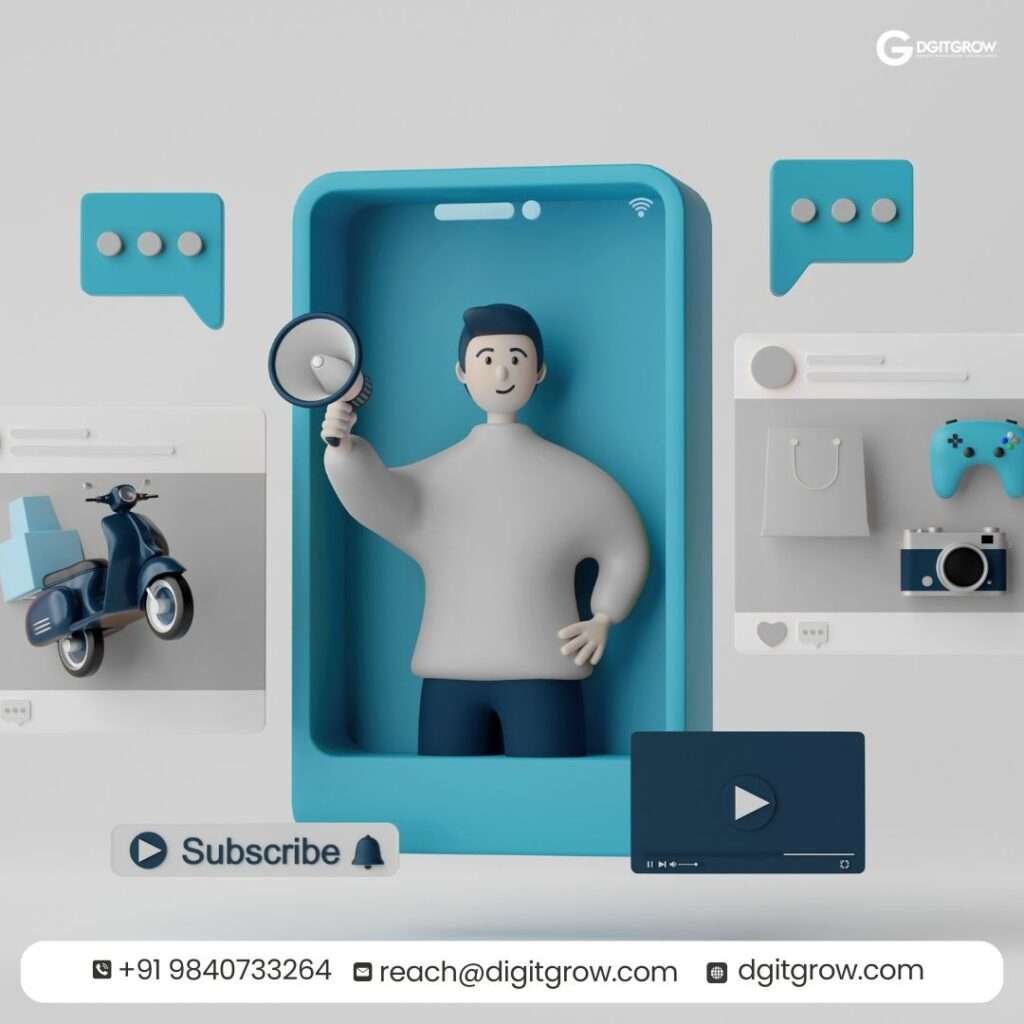
If you’ve scrolled through Instagram and bought a pair of shoes without ever leaving the app, or tuned into a TikTok live shopping event and clicked “buy now” before the host even finished their sentence, you’ve experienced the new frontier of social media marketing: social commerce.
In just a few years, the way we shop online has been transformed—no longer is social media just a place to discover brands; it’s now a direct marketplace where discovery, engagement, and purchase happen in one seamless experience.
What Is Social Commerce?

Social commerce is the blending of social media and e-commerce, allowing users to discover, research, and buy products without ever leaving their favorite social platforms. Think shoppable Instagram posts, Facebook Marketplace, TikTok Shop, and Pinterest’s Buyable Pins. The lines between “scrolling” and “shopping” have blurred, and for brands, this shift is opening up new and exciting opportunities.
Why Is Social Commerce Booming?
A few years ago, social media marketing was mostly about building brand awareness and driving traffic to your website. Today, it’s about meeting customers where they already are and making it as easy as possible for them to buy. According to recent projections, social commerce is expected to account for over 17% of all online sales by 2025, with global sales reaching $1.2 trillion.
There are a few reasons for this rapid growth:
- Convenience: Shoppers can go from discovery to purchase in just a few taps—no need to jump between apps or websites.
- Community and Trust: Social platforms foster real-time interaction, reviews, and recommendations, making the shopping experience feel more personal and trustworthy.
- Engagement: Features like live shopping, interactive polls, and influencer collaborations make shopping feel like a social event, not a transaction.
Key Trends Driving Social Commerce
1. Live Shopping Events
Live shopping is taking social media marketing by storm. Brands and influencers host live video sessions to showcase products, answer questions, and offer exclusive deals—all while viewers can purchase instantly within the app. This real-time engagement builds excitement and trust, often leading to higher conversion rates than traditional e-commerce.
2. Influencer and Micro-Influencer Marketing
Influencers have always played a big role in social media marketing, but now they’re central to social commerce. Micro-influencers, in particular, are driving sales with authentic recommendations to niche audiences. Their followers trust them, and seeing a product in action—especially in a live or interactive format—can be the final nudge needed to make a purchase.
3. AI-Driven Personalization
Social platforms are using AI to tailor shopping experiences to individual users. By analyzing browsing habits and purchase history, platforms can recommend products that are hyper-relevant, increasing the likelihood of a sale. This level of personalization is something traditional e-commerce sites struggle to match.
4. Augmented Reality (AR) Shopping
AR is making online shopping more interactive and fun. Customers can “try on” sunglasses, see how a sofa looks in their living room, or test out makeup shades—all from their phone camera. These immersive experiences reduce uncertainty and returns, making shoppers more confident in their purchases.
5. Conversational Commerce and Messaging Apps
Shopping is becoming more conversational, thanks to the integration of chatbots and live chat features in social platforms. Customers can ask questions, get personalized recommendations, and even complete transactions right within messaging apps like WhatsApp and Facebook Messenger.
The Impact on Brands and Marketers

For brands, the rise of social commerce means rethinking the entire customer journey. It’s no longer enough to just have a presence on social media; you need to create seamless, interactive, and shoppable experiences that meet customers where they are.
- Unified Commerce: Brands are integrating social commerce data with their websites and physical stores to create a unified view of the customer journey. Whether a sale starts on TikTok and finishes in-store, the experience is consistent and connected.
- Targeted Engagement: Social media algorithms allow brands to reach highly specific audiences based on interests, behaviors, and previous shopping patterns. This means more efficient ad spending and higher conversion rates.
- Stronger Customer Relationships: Social commerce isn’t just about transactions—it’s about building community. Brands that interact authentically with customers through comments, live chats, and DMs foster loyalty and repeat business.
Why Social Commerce Is a Game-Changer for Social Media Marketing
Social commerce is fundamentally changing the role of social media marketing. Instead of being a top-of-funnel awareness tool, social platforms are now full-funnel sales engines. The entire journey—from discovery to purchase to post-sale support—can happen in one place.
For marketers, this means:
- Shorter Sales Cycles: Customers can act on impulse, buying as soon as they’re inspired, without friction.
- Richer Data: Every interaction—likes, shares, comments, purchases—provides valuable insights for future campaigns.
- Increased ROI: With the ability to track the entire customer journey, marketers can measure exactly which content and influencers drive sales, optimizing spend for maximum impact.
Challenges and Opportunities

Of course, social commerce isn’t without challenges. Brands must balance authenticity with promotion, ensure a smooth user experience, and stay on top of ever-evolving platform features and algorithms. There’s also the need to build trust—shoppers want to feel confident they’re buying from reputable brands and that their data is secure.
But the opportunities far outweigh the hurdles. Social commerce offers brands a direct line to their customers, the ability to create memorable shopping experiences, and the chance to build lasting relationships in a way traditional e-commerce never could.
Final Thoughts
The rise of social commerce is more than just a trend—it’s a fundamental shift in how people shop and how brands connect with their audiences. Social media marketing is now about more than likes and followers; it’s about creating real, interactive, and shoppable experiences that turn engagement into sales.
As social commerce continues to evolve—with live shopping, AR, AI, and conversational commerce leading the way—brands that embrace these changes will not only survive but thrive in the new digital marketplace. For startups and established brands alike, now is the time to make social commerce a core part of your social media marketing strategy.

